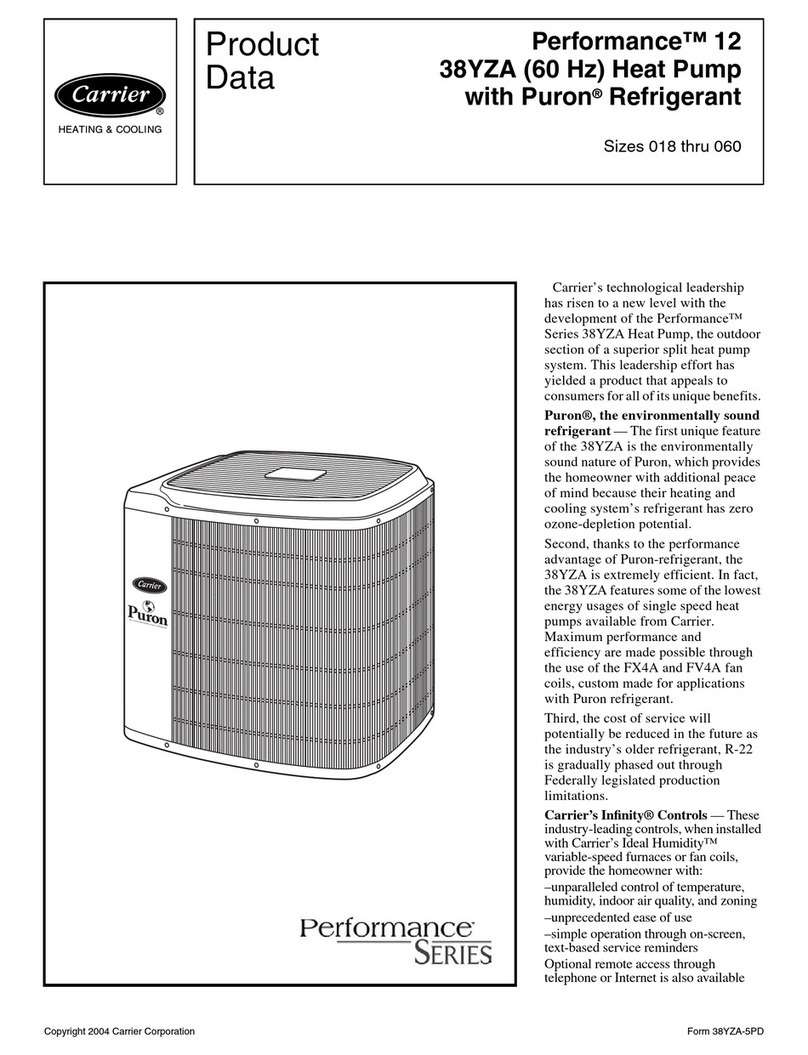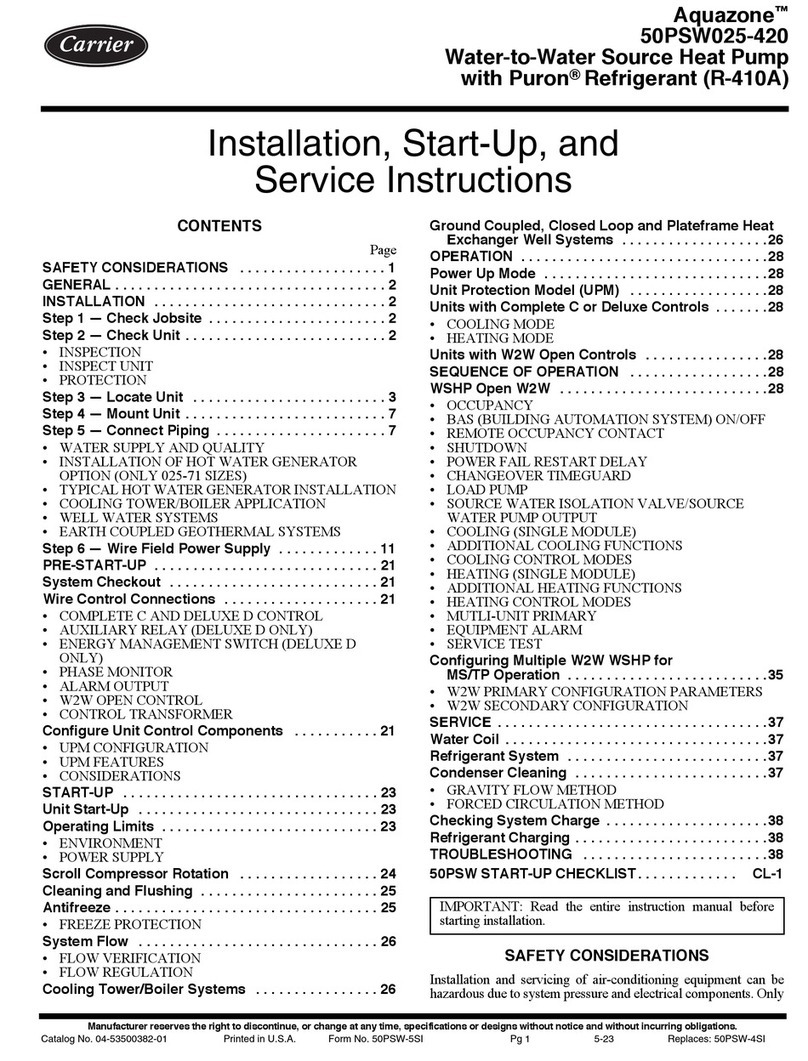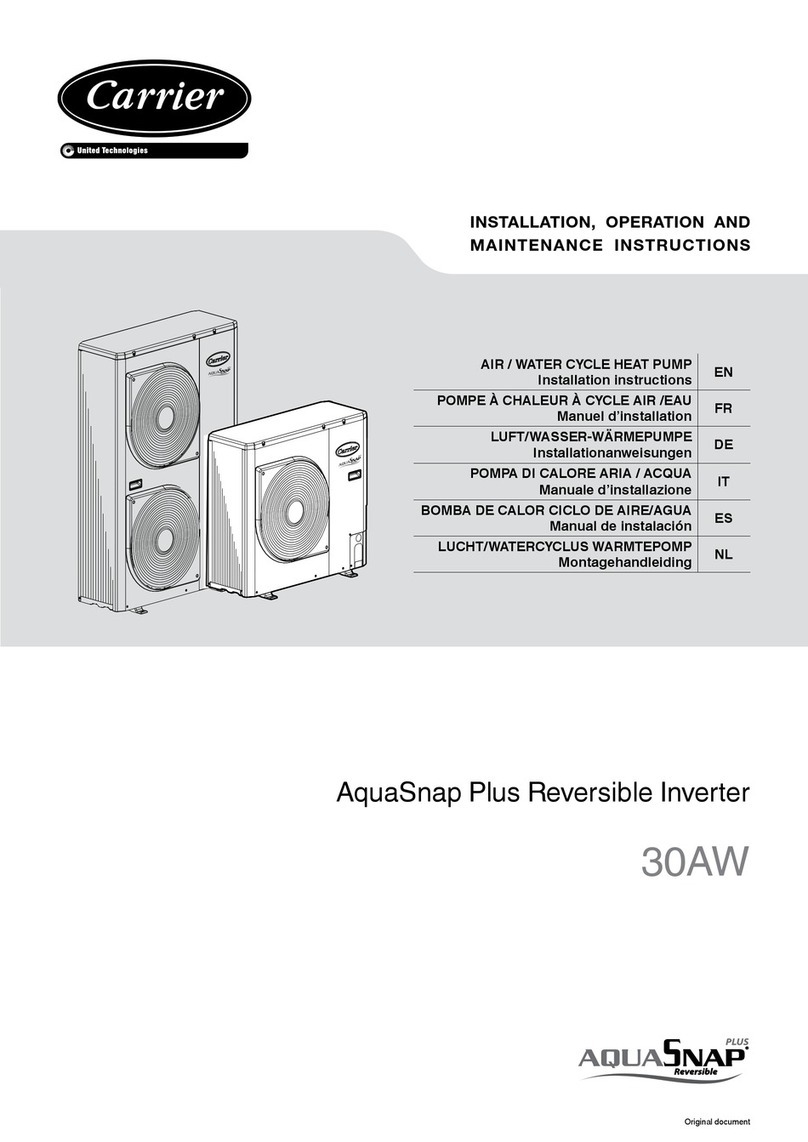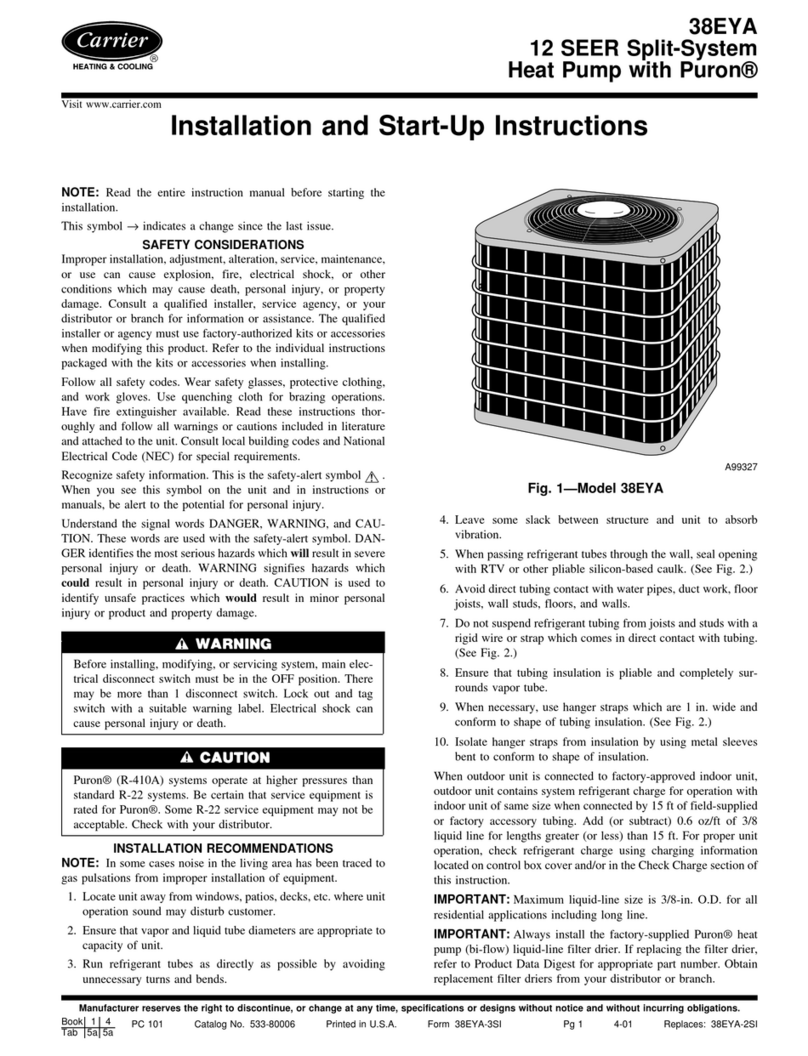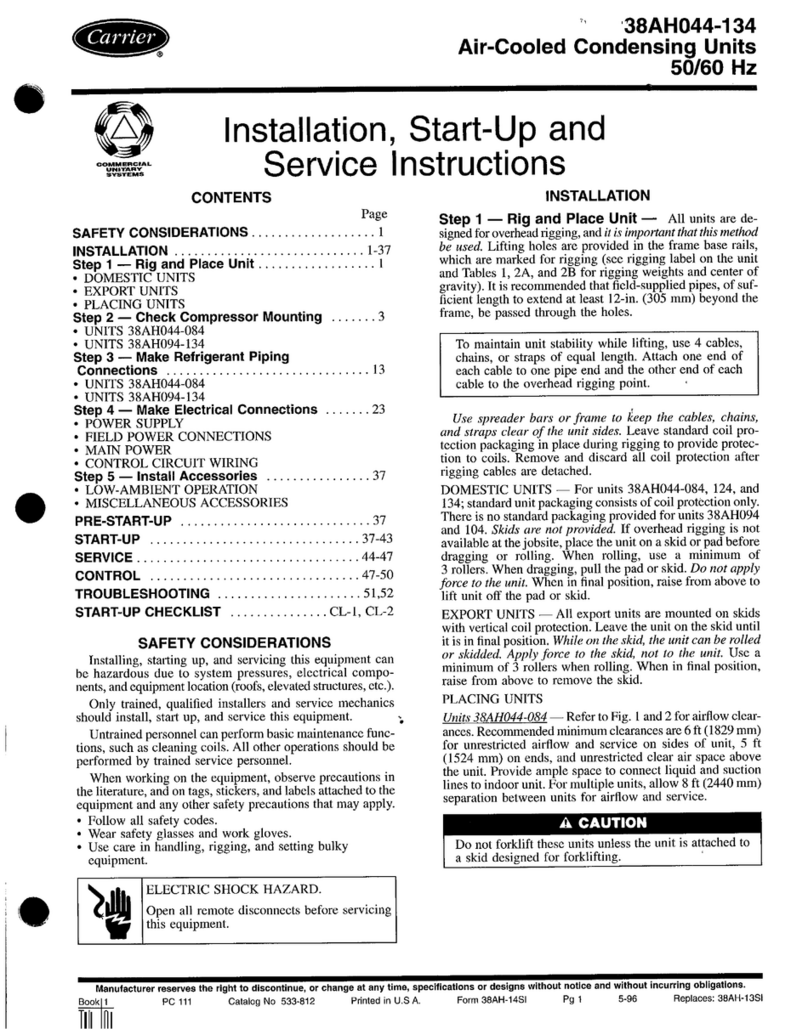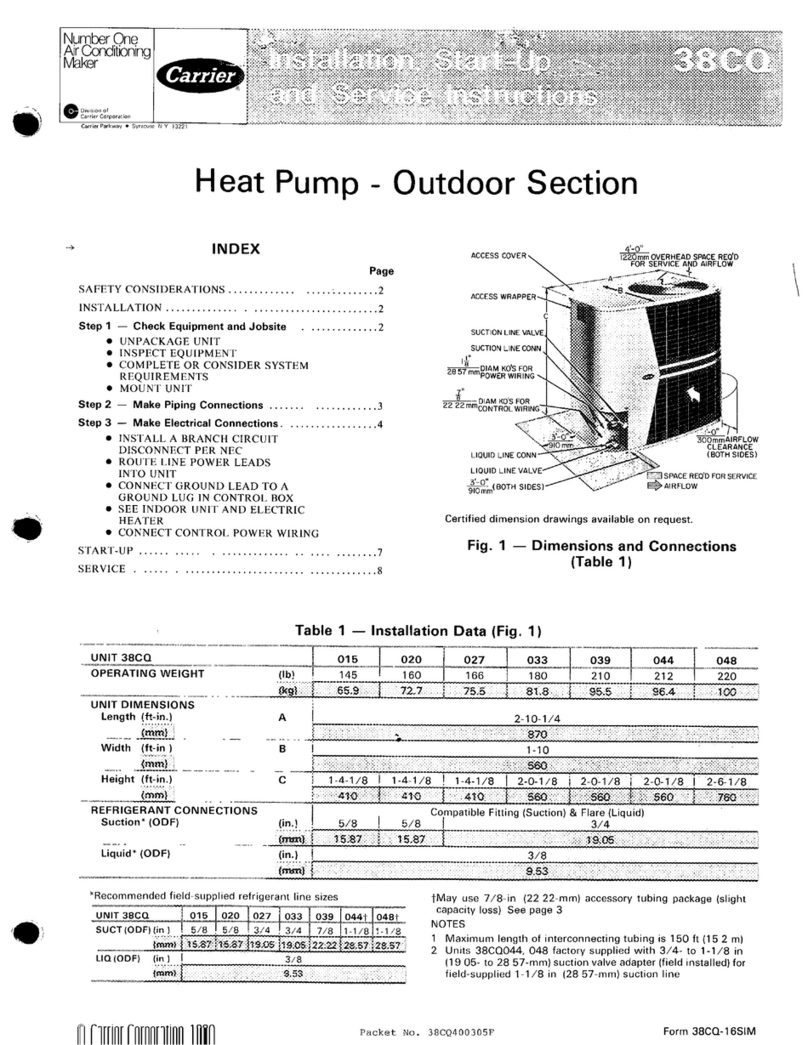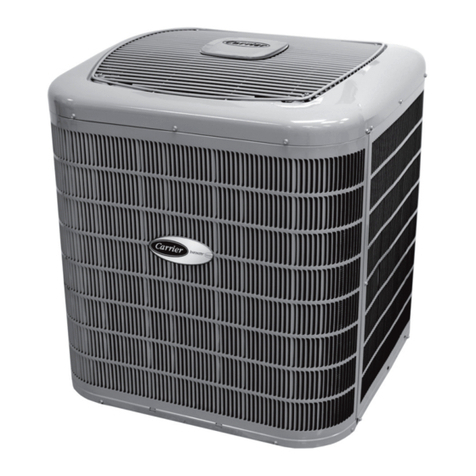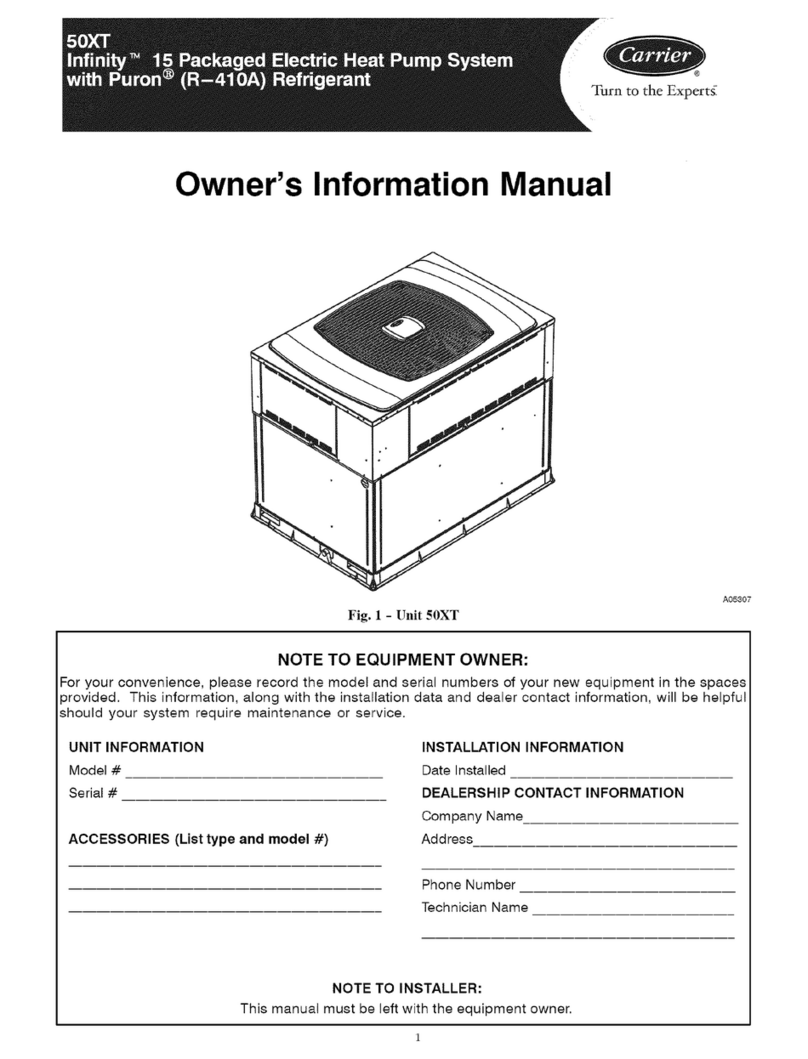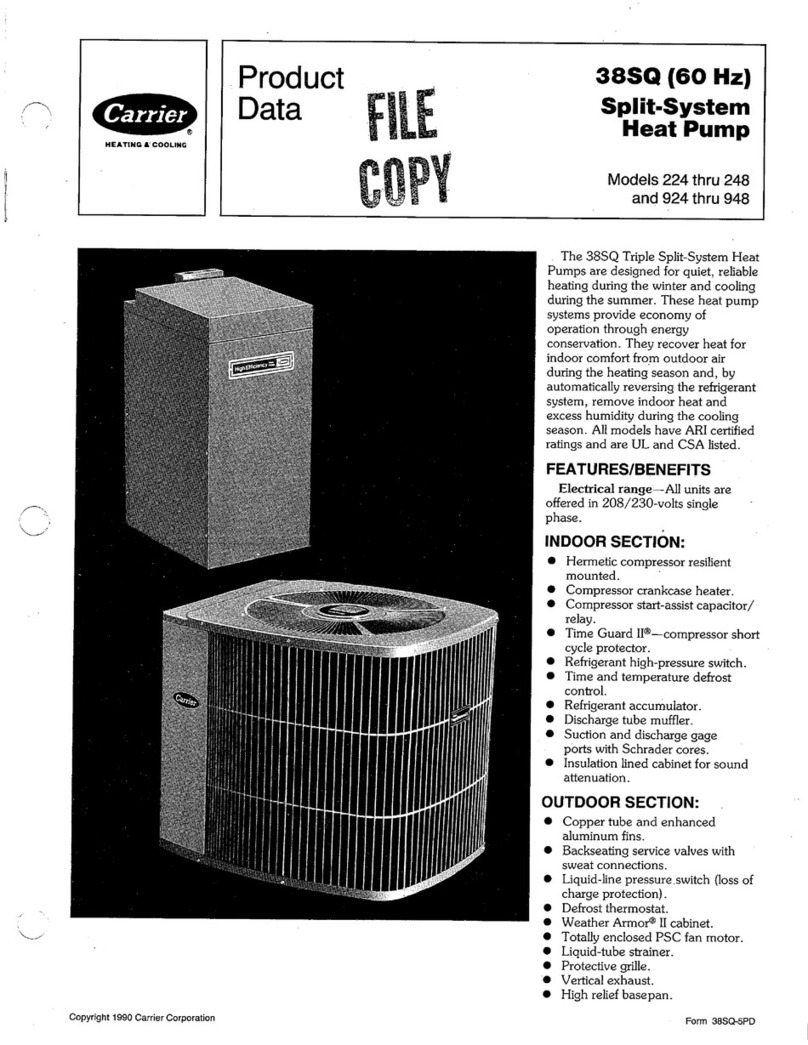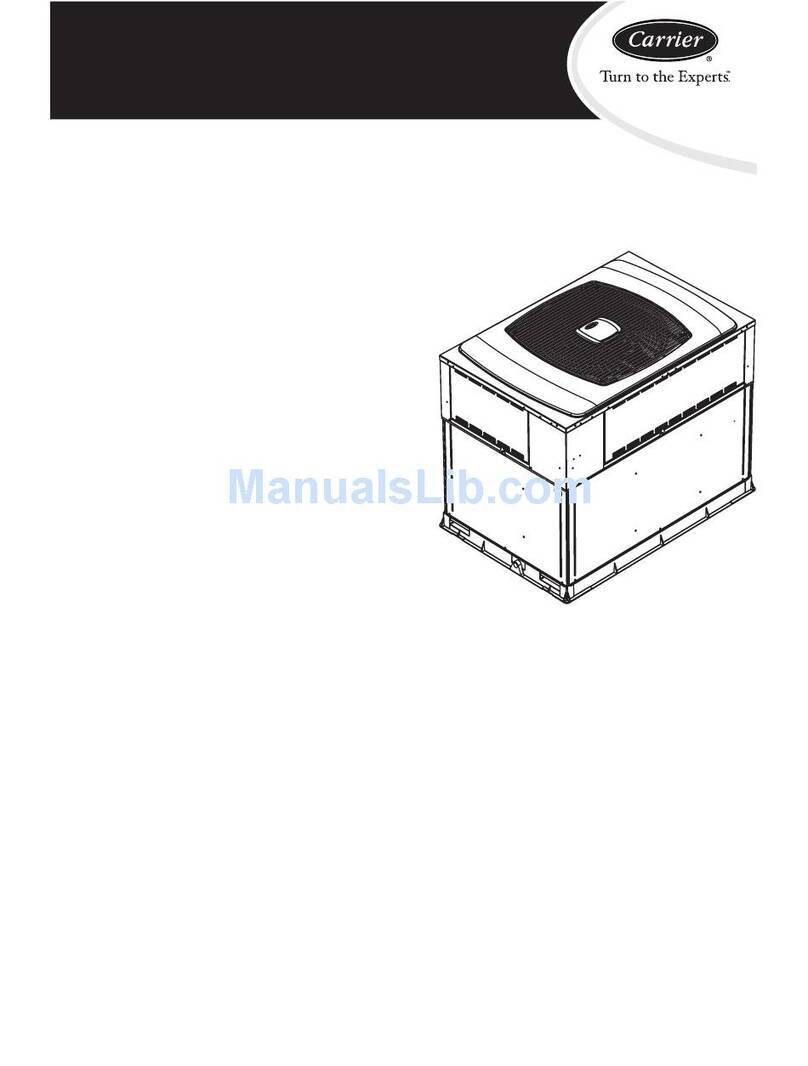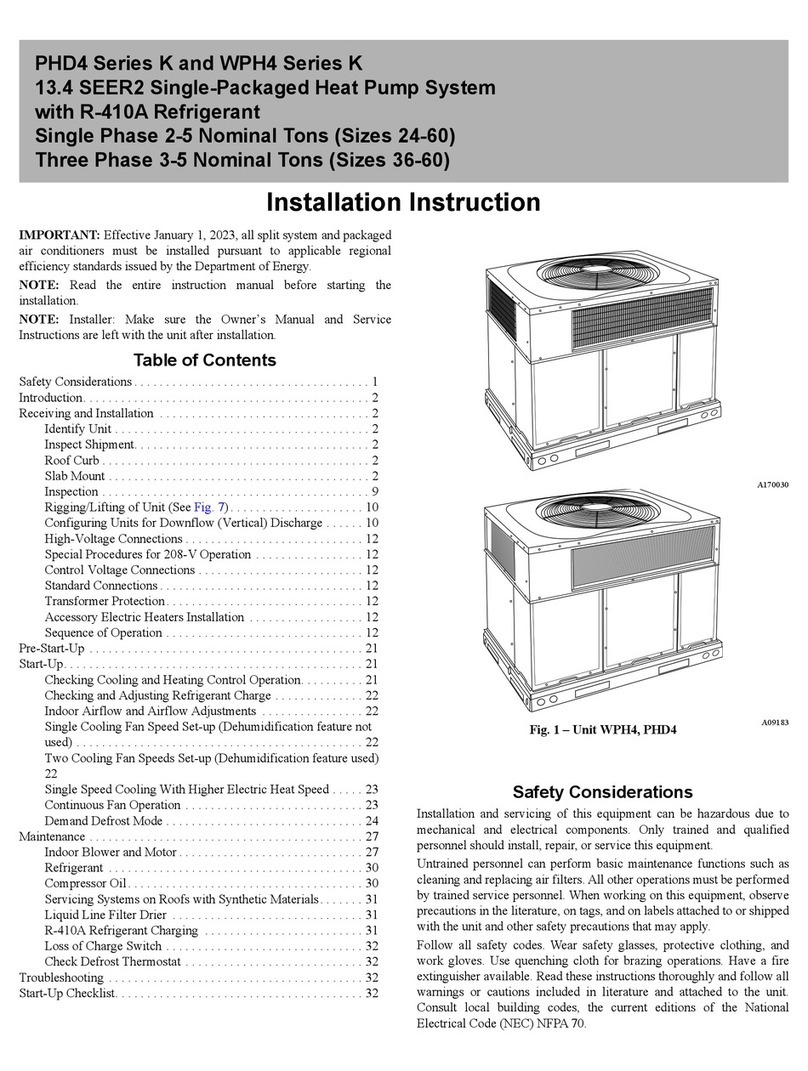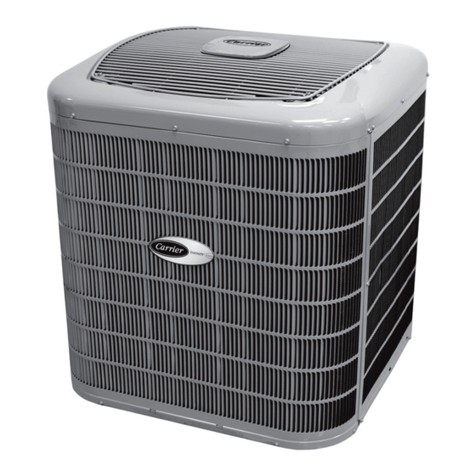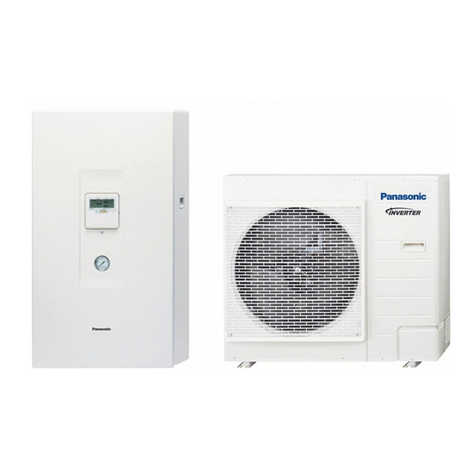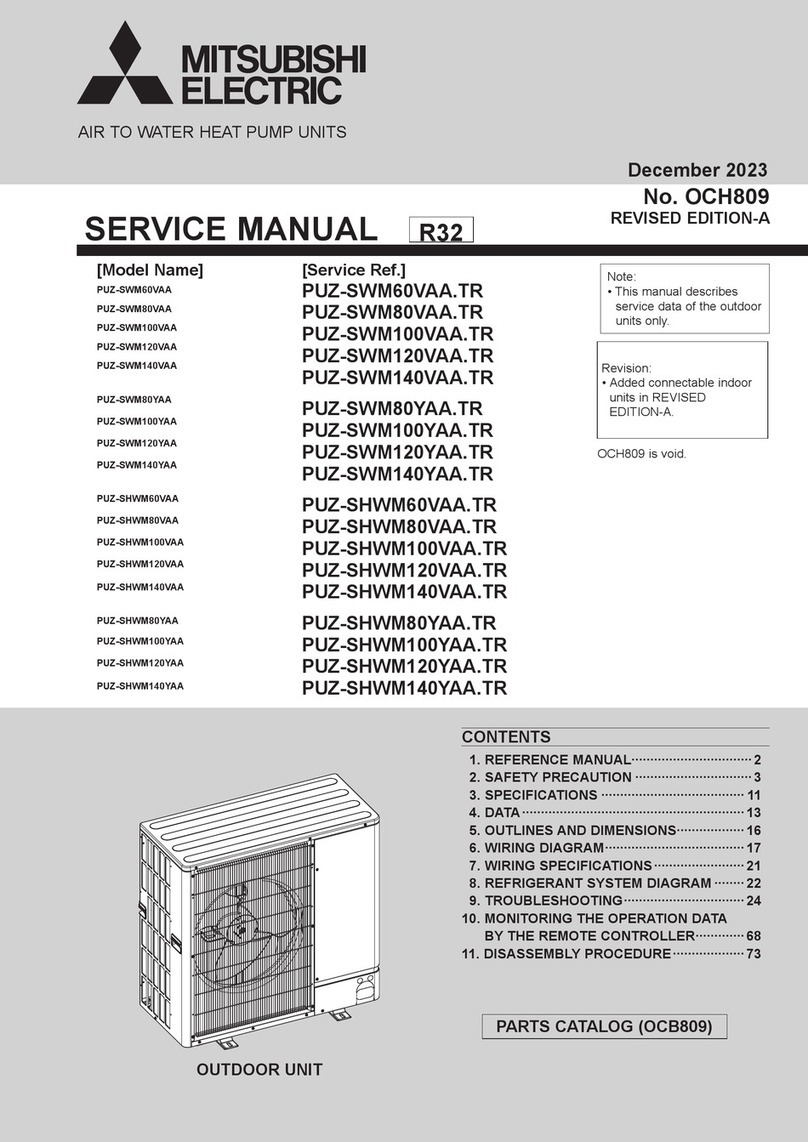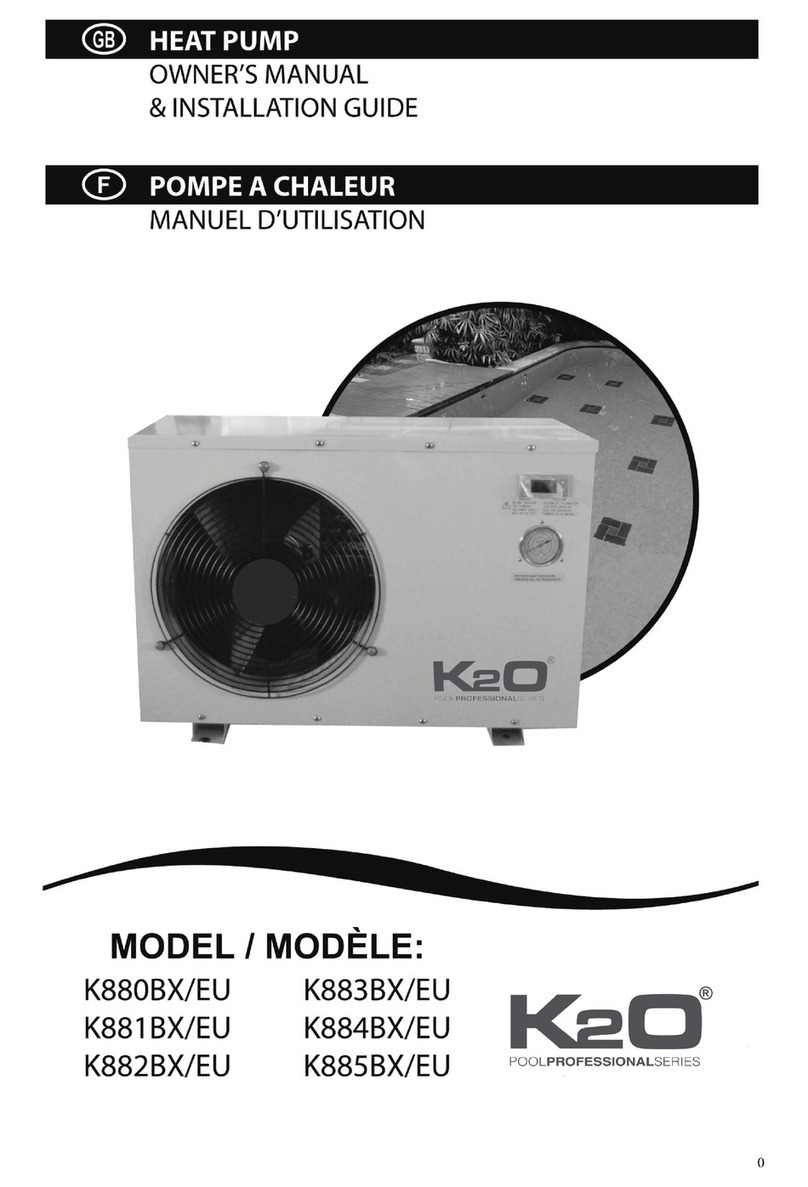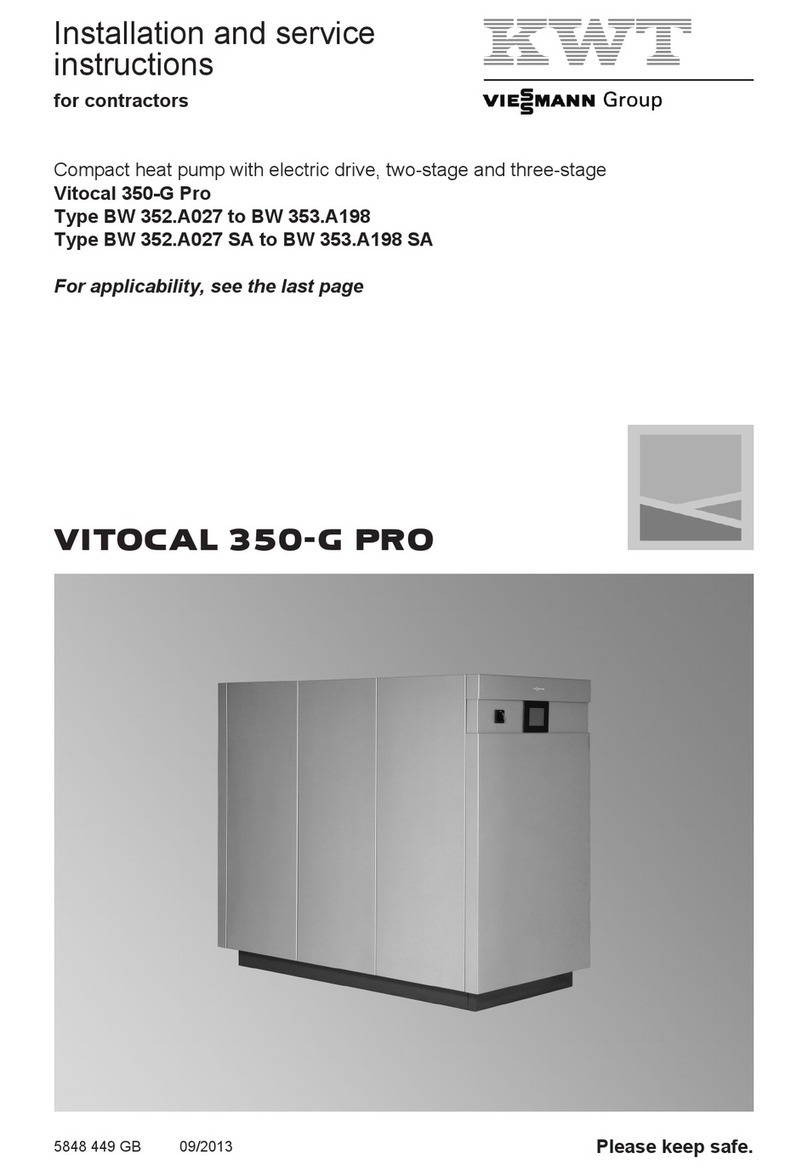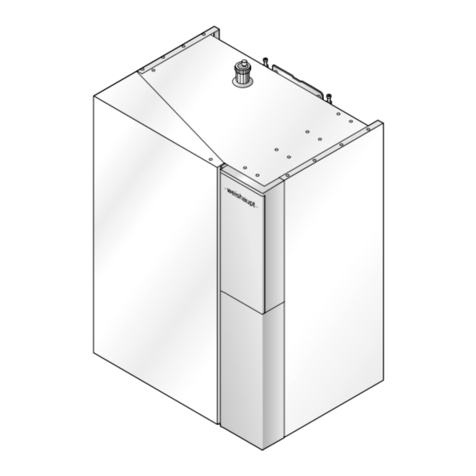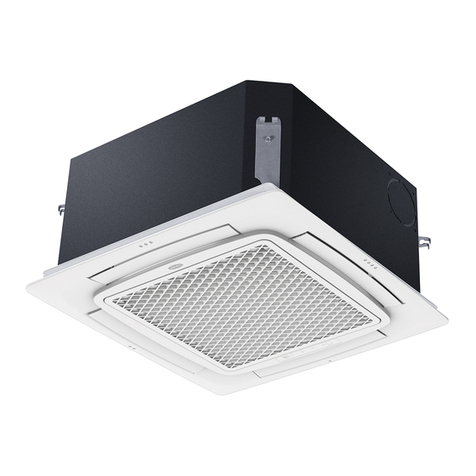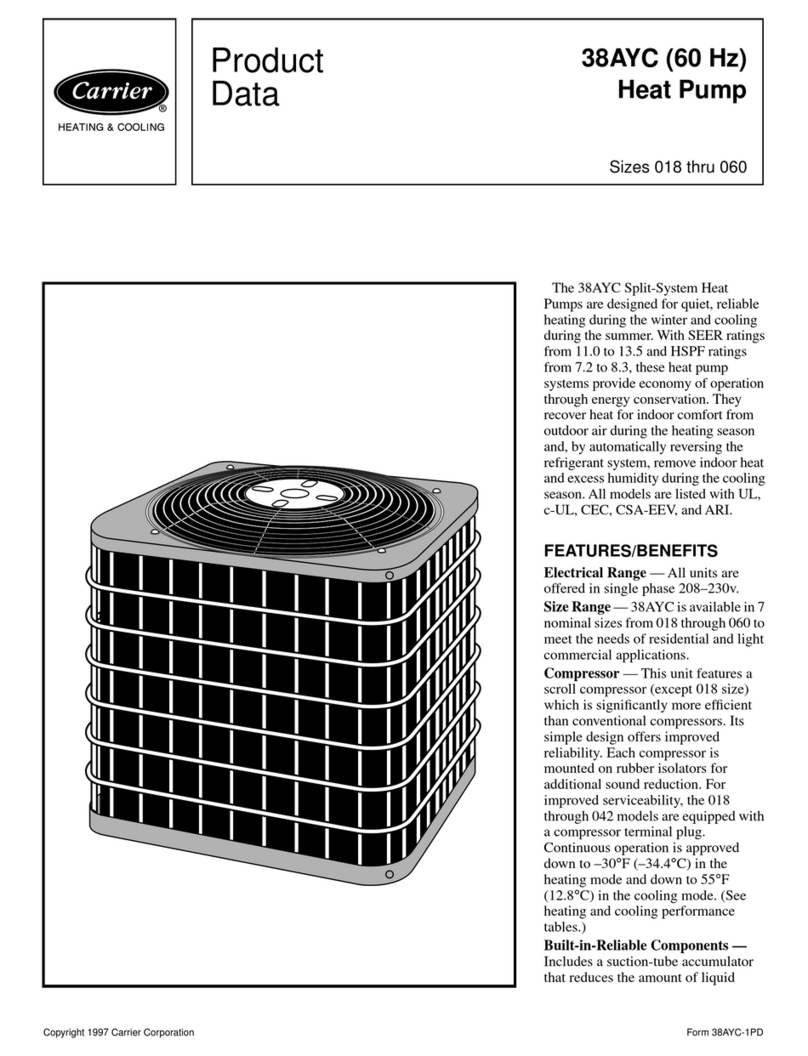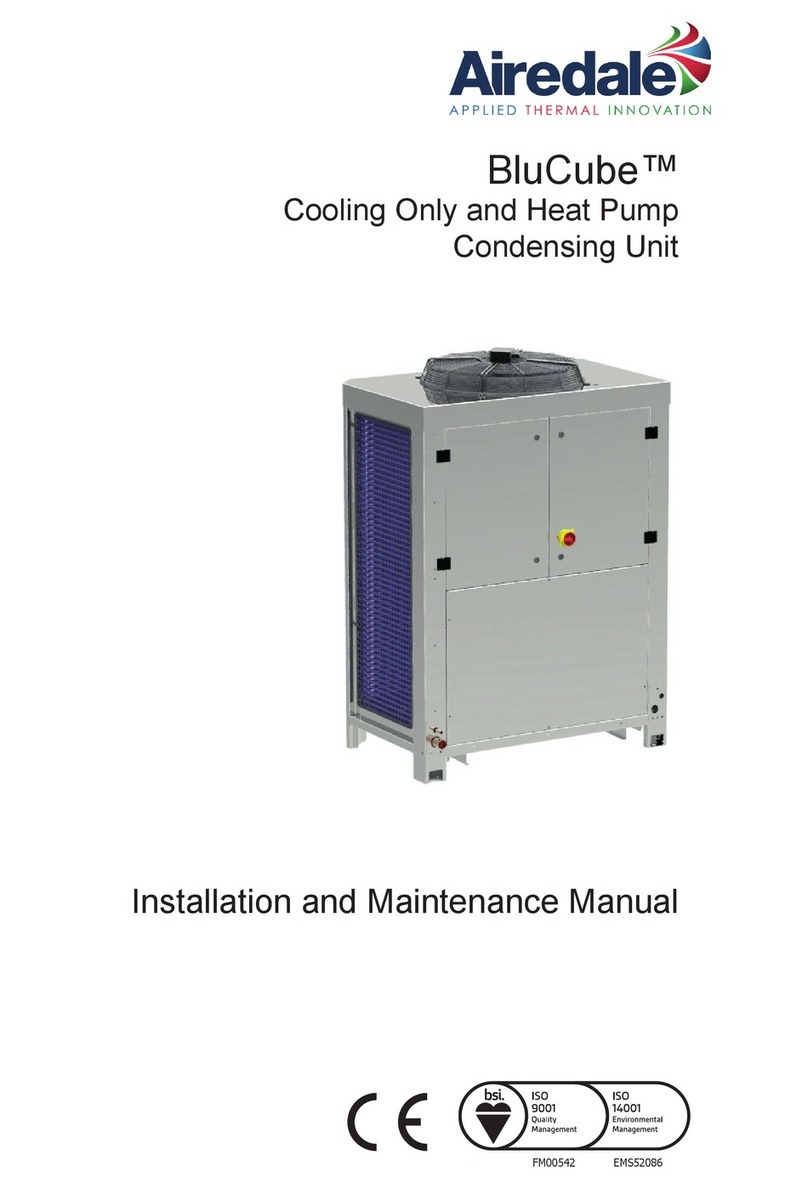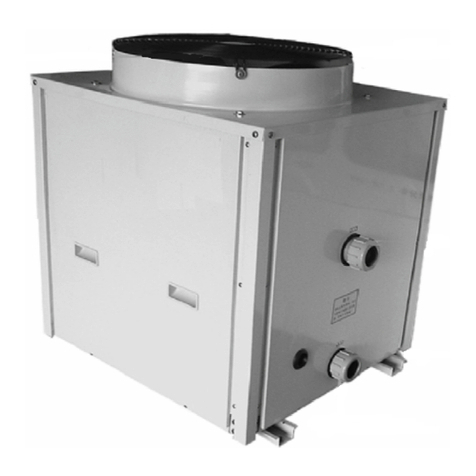
5 - HYDRAULIC CONNECTION
5.1 - Preparation
Install the heat pump only when all welding and brazing work has
been completed, all threaded connections have been made and,
if necessary, the pipework has been ushed. Dirt can damage the
heat exchanger and other heat pump components.
5.2 - Heating connection
Sizing and routing the heating/heat sink system is the responsibility
of the system installer and must be carried out in compliance with
CARRIER guidelines.
The system installer must size and install all components required
for the hydraulic circuit (e.g. safety valve, diaphragm expansion
vessel, air vent valve, etc.).
WARNING! The upper pressure limit and maximum
temperatures of the heat pump condenser given in the
machine data (see appendix) must not be exceeded at any
time. This applies regardless of whether or not the heat pump
is running and whether the heat transfer medium in the
condenser is owing or at rest.
To ensure this, install pressure relief devices in the pipework and
service/check them regularly. Ensure that there are no shut-o
valves in the pipework between the heat pump connection and
the next pressure relief devices. The blow-o ow rate of the
pressure relief device should be 10% higher than the mass ow
required for the system to avoid damaging the system in the event
of a crack in the plate heat exchanger.
The heat pump must be operated only within the permissible limits
of use (see appendix). The system installer/operator must ensure
that the limits of use are maintained.
When selecting and sizing lines, observe the applicable general
and national standards, conditions and guidelines. The latest
applicable engineering standards must be taken into account and
observed.
The operating point (temperatures, ow rates) agreed in the system
datasheet must be ensured.
In any case, at least the minimum and maximum ow rate through
the condenser as specied in the machine data (see appendix)
must be maintained during heat pump operation.
The ow rate must lie within the specied minimum and maximum
values.
The heating water and system pressure should be checked
regularly by the operator and, in the case of deviations (pressure
too high/low), corrected. The specied system maintenance
intervals and system checks must also be observed.
If, in the case of major modications or pipe breakages, a large
proportion of the heating water must be drained out and then
replaced again, this should be supervised by the contractor
authorised by CARRIER. In the case of non-routine relling (e.g.
after modications or pipe breakages), a current water assessment
must be prepared, and, on the basis of this, the heat sink system
must be relled, with additives if required, by the installer.
5.3 - Water quality
With regard to the quality and quantity of heating water, including
lling and top-up water, observe VDI 2035 or ÖNORM H5195-1
and 2.
To prevent damage, test the heating water before lling the system.
The permissible values can be found in section 5.7.2.
Never use fully desalinated water or rain water, as this causes
heavy rust formation.
Please note!
Unsuitable filling water and top-up water
promotes deposits and rust formation and can
damage the system.
5.4 - Pressure maintaining system
Before lling the system, check the pre-charge pressure in the
expansion vessel. This must be matched to the building height.
Static head: dierential between the highest point and the lowest
point in the system.
Guide value:
Pre-charge pressure = static head + 0,3 bar.
The trigger pressure selected for the safety valve must not exceed
the specied maximum operating pressure.
See EN ISO 4126-1:2016-12-15 Part 1: Safety valves
In cooling mode, the hydraulic safety and/or
pressure maintaining devices must be suciently
sized and inspected annually according to the
relevant standards to ensure the operational
reliability of your system.
Hydraulic connection of the heat pump may only be
carried out by an expert according to local
regulations!
All heat pump connections must be exible. When
installing pipework, take care to avoid transmission
of structure-borne sound. Pipework dimensions and
the selection of the circulation pump are based on
the relevant heating system.
5.4.1 - Cooling version
When used for cooling, all system components (pipes, ttings,
etc.) must be insulated against condensation build-up using
appropriate insulating materials. This is particularly important on
the ow line from the heat pump to the buer tank/distributor.
10
